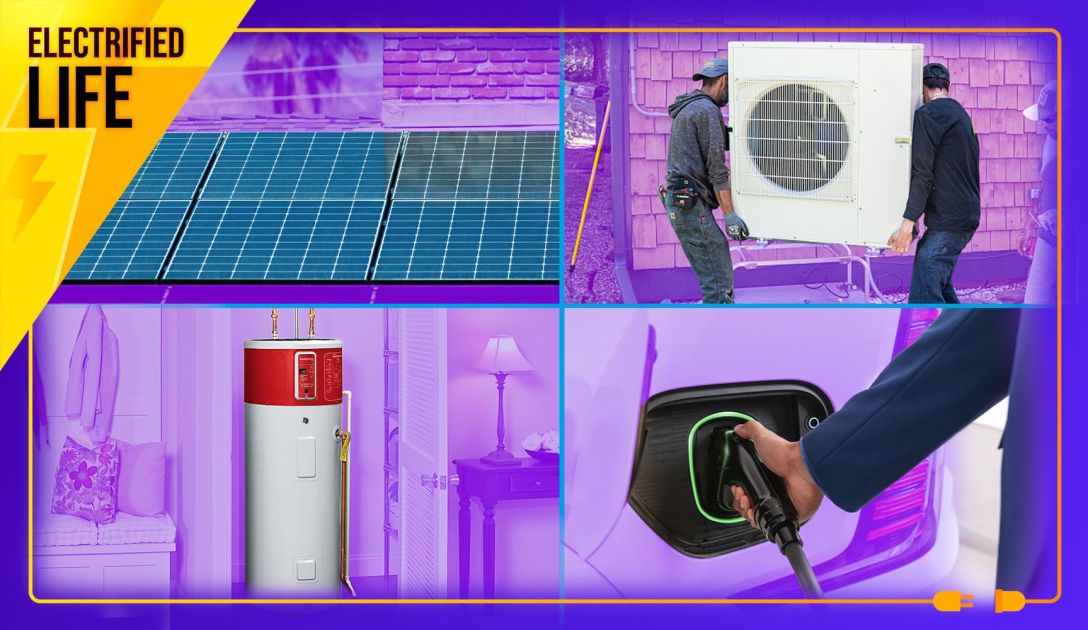
I’ve Tested Hundreds of Phones—These Are My Prime Day Picks | FROUSA Media
July 10, 2025
WOOM Announce New EP, Share New Single ‘Slow You’ – Our Culture | FROUSA Media
July 10, 2025Considering that the bill guts incentives for wind and solar, nuclear may become a more enticing option for power companies, grid managers and state governments.
But nuclear was already on the rise, at least in terms of policy support and interest from government officials.
Let’s look at what’s happening in Wisconsin.
Legislators there are taking a proactive approach that would make it easier and faster to build nuclear projects. A bill, sponsored by both Democrats and Republicans, directs the Public Service Commission to conduct a siting study to create a list of pre-certified locations for building new reactors, at both existing power generation sites and new ones.
The bill passed through the Senate and Assembly at the end of June with little opposition. Gov. Tony Evers, a Democrat, signed it into law on July 3. Evers has made nuclear power a priority and set aside $1 million for a nuclear power plant feasibility study in the state budget. “Gov. Evers believes now is the time to achieve the state’s vision for a clean energy economy,” his office said.
Before I go on, I need to remind you why it’s much easier to talk about building a nuclear power plant than actually doing so.
One of the biggest barriers is the timeline. Construction can take over a decade from start to finish—and the longer it goes, the more expensive it becomes. Just look at the Vogtle nuclear reactors in Georgia, which came online in 2024, seven years later than planned, and $17 billion more than the original budget.
The Vogtle units are the first new nuclear reactors built in the U.S. since 2016. But as states prepare for energy demand to rise, with the rapid spread of data centers and artificial intelligence, nuclear power is back in the spotlight.
Data centers are already flocking to Wisconsin, where a cooler climate, access to Lake Michigan and favorable tax laws make it an appealing place to settle. It’s hard to over-emphasize the amount of energy demand data centers will add. A 1,900-acre data center planned for Port Washington, along Lake Michigan, is set to consume as much energy as the entire city of Los Angeles. And that’s just one data center.
While Wisconsin has the economic groundwork for data centers, it doesn’t have the energy supply; the state consumes six times more energy than it produces.
Already, fossil fuel projects are popping up to fill in the gaps. To accomodate a $3.3 billion Microsoft data center outside of Milwaukee, a Wisconsin utility is trying to open a new gas plant. Another option—one without atmosphere-warming carbon emissions—is nuclear power.
Until 2016, Wisconsin had a moratorium on new nuclear reactors. First implemented in 1983, the law banned building nuclear plants until the federal government could create a plan for managing nuclear waste long term.
The federal government still doesn’t have that plan, but the need for energy—fast—has seemed to outweigh concerns about dealing with waste.
Wisconsin was the first state to lift its nuclear moratorium, but it has since been followed by Kentucky, Montana and West Virginia. A handful of other states still have moratoriums, including California, Maine, Oregon, Vermont, New Jersey, Rhode Island and Hawaii. Legislators in Minnesota are currently trying to lift their ban.
Nuclear is appealing because it’s the “fastest way to generate the most amount of power with the least amount of impact on the community,” said state Rep. David Steffen, a Republican who is primary author of the nuclear siting bill.
But there is opposition, including from Clean Wisconsin, a nonprofit focused on combating climate change and pollution.
“We are concerned about a complete lack of national effort on what to do with waste,” said Erik Kanter, government relations director. On top of that, the group disagrees with using taxpayer dollars to fund a siting study, rather than having the nuclear industry pay for it themselves.
Instead of funding nuclear energy, Kanter said, Wisconsin should be focused on ramping up renewables. “We know that wind and solar are quite inexpensive and quite easy to build and implement right now,” he said.
But currently, Wisconsin only gets a tiny percentage of its electricity from renewables—5 percent from solar and 3 percent from wind. Nuclear from the state’s one operational plant, the Point Beach Nuclear Plant, brought online in 1970, supplies 15 percent of the state’s energy. Another 72 percent comes from coal and gas.
While there are some state grants and incentives available for clean energy in Wisconsin, the biggest drivers for solar and wind—federal clean energy tax credits—have now been significantly undermined in Trump’s budget bill. Nuclear, on the other hand, is getting a boost from federal policies. The Trump administration wants 10 large reactors under construction in the U.S. by 2030, and Trump signed an executive order in May to accelerate the Nuclear Regulatory Commission’s approval process for new projects.
The question is: “How do we increase our mix and potentially tap into federal funds that will help us do that?” asked state Rep. Lisa Subeck, a Democrat.
It’s worth noting that nuclear is getting bipartisan support in Wisconsin and in much of the country, which is a difficult feat as energy policy has become increasingly partisan.
The Biden administration’s funding for nuclear in the Inflation Reduction Act “has been really helpful” in shifting the political conversation, said state Rep. Shae Sortwell, a Republican and a lead author of the siting bill. “Biden showed he was open to it and that seemed to give permission to lower level Democrats to like nuclear, too,” he said.
Sortwell hopes that, with more education, the public will see that “nuclear power is not the big bogeyman that some people think it is. It’s clean. If it’s run properly, it is very safe,” he said. “If you want to move to a more electrical driven economy, nuclear power is your choice.”
This story is funded by readers like you.
Our nonprofit newsroom provides award-winning climate coverage free of charge and advertising. We rely on donations from readers like you to keep going. Please donate now to support our work.
Nuclear energy could be an alternative to building more gas or coal plants, providing enough energy to meet rising demands without adding carbon emissions, said Oliver Schmitz, a professor in nuclear engineering at University of Wisconsin-Madison. “We have diminishing coal reserves. We have diminishing oil reserves. What is the next base load energy source?”
The siting study is a critical first step to answering that question. It will be up to the Public Service Commission to create and carry out the actual study, but it would likely involve evaluating environmental impact, gaining community buy-in, and identifying prime spots—sites near electric substations for easy connection to the energy grid, and near water for cooling, are ideal.
“All of this is to pave the way ahead of time so when a company comes in, they’re not turning into unexpected roadblocks,” Sortwell said.
Other stories about the energy transition to take note of this week:
The Big Beautiful Bill Has Become Law. Here’s What It Does: The day the budget reconciliation bill passed the House last week, a team of eight ICN reporters explained what’s in this measure and how it sets back U.S. progress on addressing climate change, developing renewable energy and meeting the needs of environmental justice communities.
Trump Follows the Big Bill With an Executive Order Targeting Wind and Solar: One subplot ahead of the budget bill’s passage was how opposition from House Republican fiscal hardliners seemed to melt away following a meeting with President Donald Trump. We now know that Trump made assurances to members that he would take additional action through an executive order to limit the ability of companies to use tax credits for wind and solar power. He issued that order on Monday, as ICN’s Dan Gearino reports.
Automakers Emphasize Selling EVs Ahead of Sept. 30 Tax Credit Cancellation: The budget bill discontinues the $7,500 tax credit for buying a new EV and the $4,000 credit for a used EV, effective Sept. 30. This is setting off a summer of heavy promotion by automakers that want to clear out as much of their inventory as possible before the deadline, as Nora Eckert and Abhirup Roy report for Reuters. Tesla, the country’s EV sales leader, is emphasizing the need to act by Sept. 30 in marketing messages and Ford has extended its promotion that gives a free home charger to EV buyers so it now will last through Sept. 30.
Geothermal Power Was Unscathed in Budget Bill, But Hurdles Remain: Tax credits for geothermal power will remain in place, having been spared by Congress in the budget measure, but the industry still faces challenges from tariffs and other factors, as Maria Gallucci reports for Canary Media. Tariffs on steel and aluminum will increase the cost of key equipment as will a provision in the bill that puts additional restrictions on components from companies with ties to China.
Inside Clean Energy is ICN’s weekly bulletin of news and analysis about the energy transition. Send news tips and questions to [email protected].
About This Story
Perhaps you noticed: This story, like all the news we publish, is free to read. That’s because Inside Climate News is a 501c3 nonprofit organization. We do not charge a subscription fee, lock our news behind a paywall, or clutter our website with ads. We make our news on climate and the environment freely available to you and anyone who wants it.
That’s not all. We also share our news for free with scores of other media organizations around the country. Many of them can’t afford to do environmental journalism of their own. We’ve built bureaus from coast to coast to report local stories, collaborate with local newsrooms and co-publish articles so that this vital work is shared as widely as possible.
Two of us launched ICN in 2007. Six years later we earned a Pulitzer Prize for National Reporting, and now we run the oldest and largest dedicated climate newsroom in the nation. We tell the story in all its complexity. We hold polluters accountable. We expose environmental injustice. We debunk misinformation. We scrutinize solutions and inspire action.
Donations from readers like you fund every aspect of what we do. If you don’t already, will you support our ongoing work, our reporting on the biggest crisis facing our planet, and help us reach even more readers in more places?
Please take a moment to make a tax-deductible donation. Every one of them makes a difference.
Thank you,
Great Job By Carrie Klein & the Team @ Inside Climate News Source link for sharing this story.
#FROUSA #HillCountryNews #NewBraunfels #ComalCounty #LocalVoices #IndependentMedia
Great Job Felicia Ray Owens & the Team @ FROUSA Media Source link for sharing this story.




